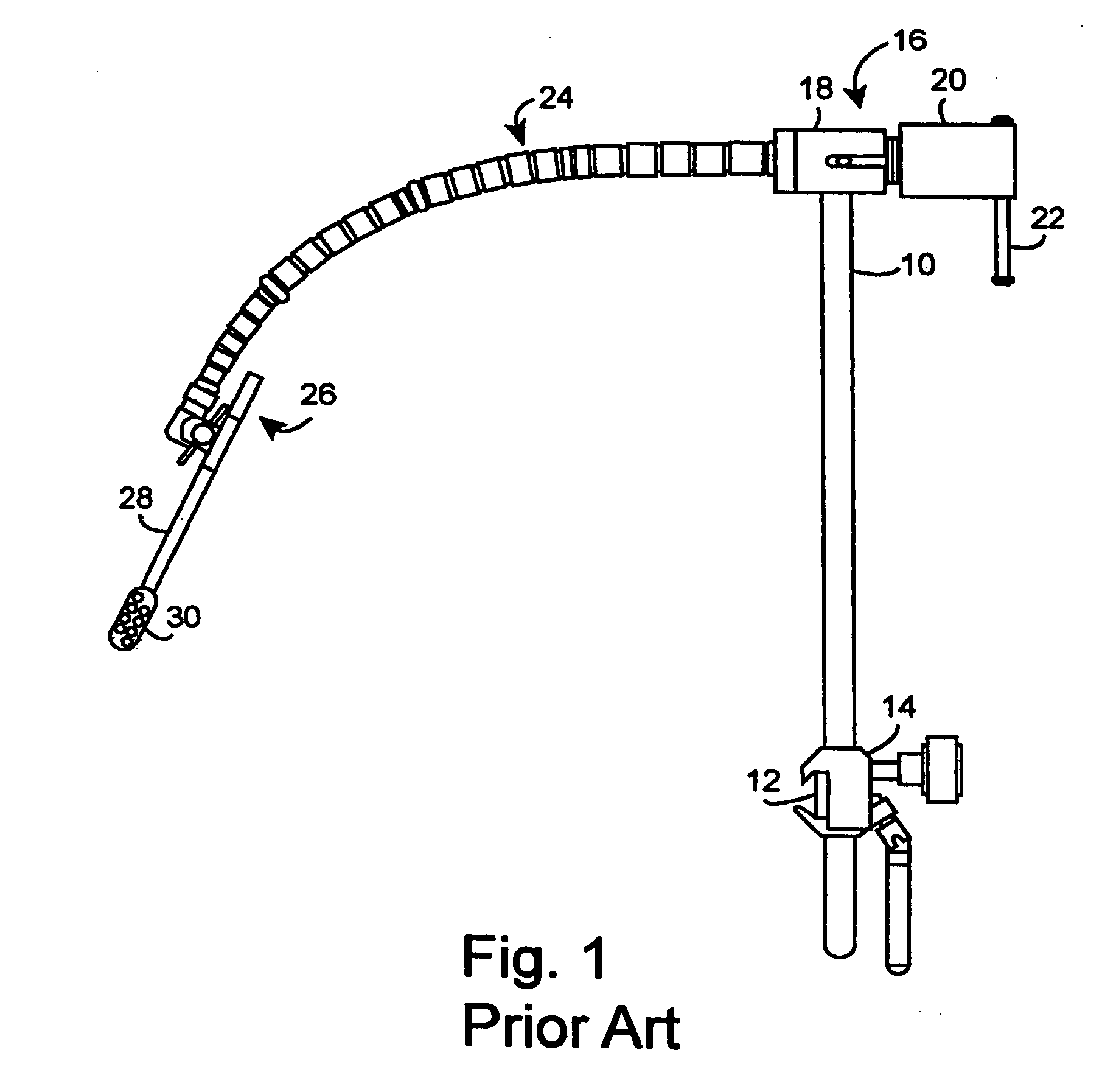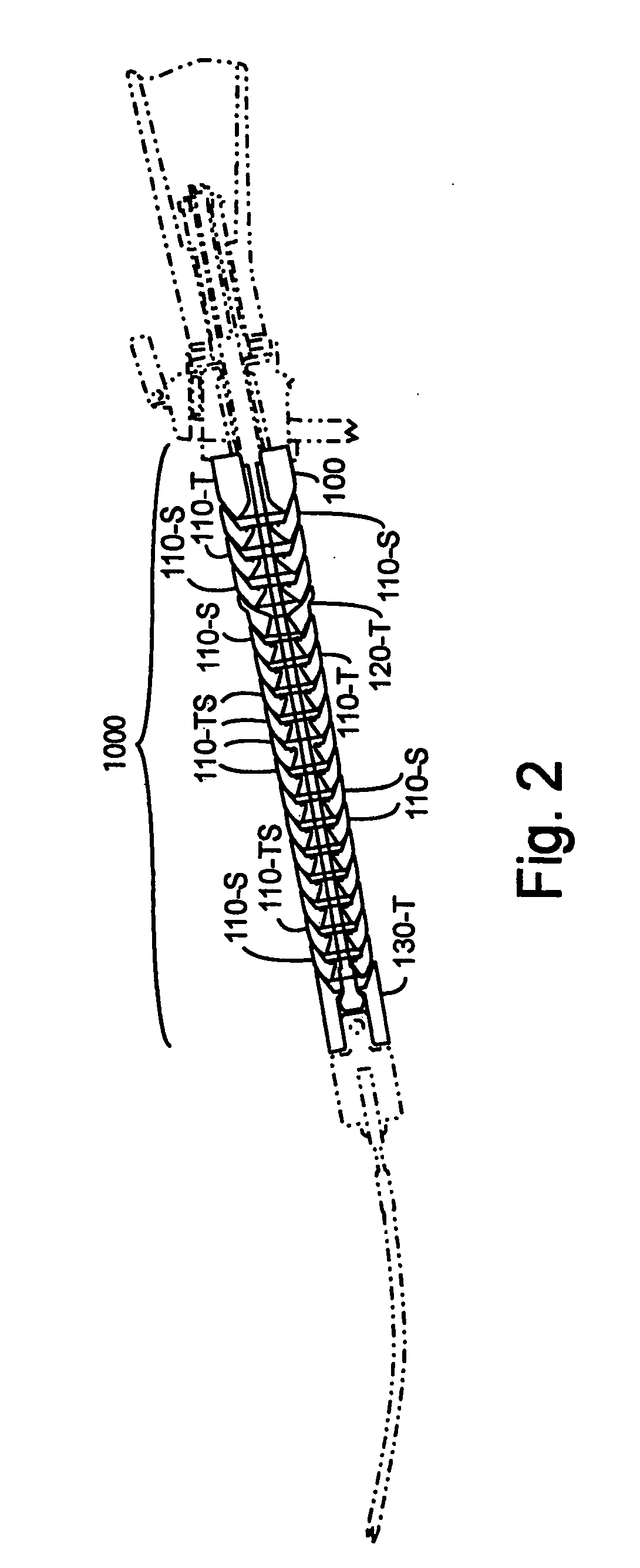Method and apparatus for improved stiffness in the linkage assembly of a flexible arm
- Summary
- Abstract
- Description
- Claims
- Application Information
AI Technical Summary
Benefits of technology
Problems solved by technology
Method used
Image
Examples
Embodiment Construction
[0061] Various embodiments built in accord with the invention will be discussed. The invention increases the stiffness of flexible arm linkage assemblies, by increasing the friction between link contacts, when in a locked configuration operating similarly to existing plastic based linkage assemblies.
[0062] The invention includes a flexible arm linkage assembly provided with a tensioning cable. The linkage assembly includes a first link with a first contact surface composed of a first contact material, and a second link with a second contact surface composed of a second, differing contact material. A high friction coupling between the first link and the second link is created by the first contact surface contacting the second contact surface when induced by the tensioning cable.
[0063] Each of the contact materials is primarily composed of a respective metallic compound, or compounds, providing a higher coefficient of friction between the two contacting surfaces than would result fr...
PUM
 Login to View More
Login to View More Abstract
Description
Claims
Application Information
 Login to View More
Login to View More - R&D
- Intellectual Property
- Life Sciences
- Materials
- Tech Scout
- Unparalleled Data Quality
- Higher Quality Content
- 60% Fewer Hallucinations
Browse by: Latest US Patents, China's latest patents, Technical Efficacy Thesaurus, Application Domain, Technology Topic, Popular Technical Reports.
© 2025 PatSnap. All rights reserved.Legal|Privacy policy|Modern Slavery Act Transparency Statement|Sitemap|About US| Contact US: help@patsnap.com



